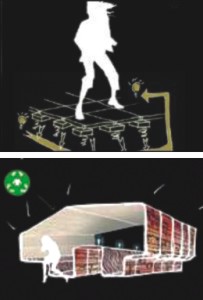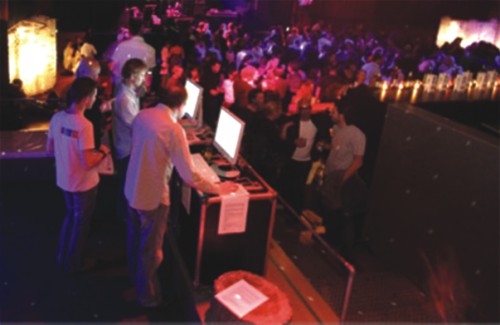|
Environment
Sustainable Fun
Srabonti Narmeen Ali
It's 'in' to conserve. With the worldwide panic over global warming, the demand for eco-friendly products and awareness and responsibility towards the environment is getting higher. And why not? If people can have protests about global politics and violence all over the world, it is only natural to protect the one thing that we all take for granted; the one thing that we all need, despite our background and culture. The movement for a 'greener' world gets stronger and more relevant to our every day lives every year. So much, that last year in the Netherlands, a new club opened up in which club-goers are meant to have a good time as well as learn to be responsible about the environment. Even clubbing and having fun, it seems, can be a way to make people wake up and pay attention to the world around them. While browsing through the internet, I surprisingly came across a BBC article on the Sustainable Dance Club (November 15, 2006), located in Rotterdam, which tries to endorse eco-friendly ways of having fun in addition to making their clientele aware of the various ways they can conserve water, electricity and energy.
 The club hopes to have a special floor made of crystals which will produce electricity when it is stepped on. |
According to the Sustainable Dance Club (SDC) website, the club is the brainchild of two different organisations: Enviu -- innovators in sustainability and the architecture firm Döll -- Atelier voor Bouwkunst. These two organisations aim to combine different ideas on sustainability with every day lives. Club-goers are not only able to enjoy themselves but also are able to 'feel good' about themselves knowing that they are contributing to saving the environment.
How is all of this possible? The club's facilities are surrounded by the idea that the natural energy expended by people -- mainly heat, movement and sweat -- will enable certain things to work. For example, a highlight of the club mentioned in the BBC article, the dance floor of the club converts the energy of the dancers into electricity. This can be done in various ways, which the organisations and Professor Han Brezet of Delft University of Technology (who is acting as the technical advisor for the club) are still working out.
The long term plan for this generation of electricity from the club-goers is that the club hopes to have a special floor made out of crystals which will produce electricity when it is stepped on, which is known as 'piezoelectricity'.
Other features of the club include a wall that changes colour not from special effects of funky lights, but rather peoples' body heat and temperature fluctuations. That means, the more happy you are, the more chances there are of the walls turning a different colour, something the club owners sustainable flirting.
Clubbers are also encouraged to go to the 'relax roof,' an open air rooftop garden in which they can sample some of the club's organic or 'biological' drinks from the taps on a wash basin.
The organisations are using already existing technologies such as wind turbines, a machine that converts the kinetic energy found in wind into mechanical energy, which can be converted into electricity. In addition, they are also incorporating something called grey water recycling for the bathrooms. The concept of grey water recycling is interesting. There should be two different drainage systems in a home; one for the sewage and one for excess water from showers and washing machines, otherwise known as grey water. This water will then be treated and recycled for re-use, usually in landscaping and gardening. The organisations of the Sustainable Dance Club are borrowing this idea, albeit changing the concept around a little by saving rainwater and re-using it for flushing toilets in the club area.

An environment-friendly club is jam-packed with clubbers who have to dance to keep things working.
It is praiseworthy that the Netherlands, with a population of 16,570,613, and, being a part of the first world, hence not really being in danger or running out of water or electricity any time soon, is so conscious of saving their energy sources. Bangladesh's population, approximately 150,448,340, although in danger of many different natural disasters (the most recent cyclone robbing Dhaka city of its electricity for over 24 hours), does not consider conserving water and electricity as a priority. Granted, the majority of the population are not privy to such luxuries at all, and therefore the thought of conserving what they do not have would not even occur to them. Still, for those of us who do enjoy the perks of electricity and water, making concerted efforts not to waste these essential resources could significantly reduce shortages. This innovative Dutch Club is certainly a great lesson in how we can contribute to conservation and preservation, if we really want to.
Copyright (R) thedailystar.net 2007 |
